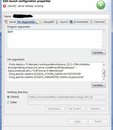Department
server
server
John Doe
April 24, 2025, 8:12 a.m.
John Doe
Nov. 28, 2023, 9:14 p.m.
John Doe
Aug. 6, 2023, 8:52 a.m.
John Doe
June 26, 2023, 3:45 a.m.
John Doe
June 22, 2023, 11:33 p.m.
John Doe
Feb. 7, 2023, 11:44 p.m.
John Doe
Feb. 7, 2023, 9:33 a.m.
John Doe
Feb. 6, 2023, 5:59 a.m.
John Doe
Feb. 6, 2023, 4:18 a.m.
John Doe
Feb. 3, 2023, 6:47 a.m.
John Doe
Jan. 29, 2023, 9:54 p.m.
John Doe
Jan. 12, 2023, 9:08 a.m.
- 1 (current)
- 2

